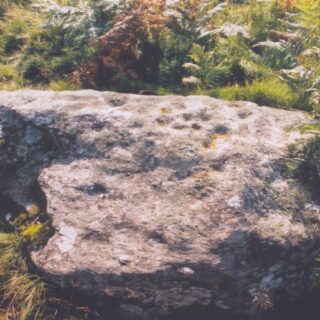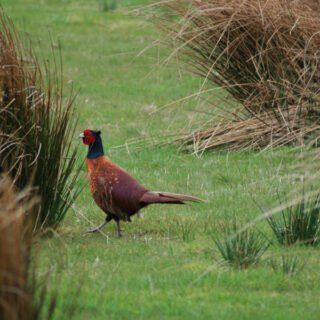Being a May bank holiday weekend today was grey and overcast, although noticeably warmer than recently. We picked up our hire car and after lunch headed south-west of Edinburgh to the tiny village of Carmichael.
Carmichael is the ancestral home of Clan Carmichael, the clan taking their surname from the are in which they lived. The Carmichael Estate has been owned by the Carmichael family for some 800 years, and at its centre is the Carmichael Visitor Centre and Farm Shop.
We called in to pick up a map of the walks on the estate, and some sweet apple chutney, then set off to explore. The path leaves the farm north then west, passing through a deer park, then through a small wood before crossing St. Michael’s bog. The bog has evidently been drained during the course of agricultural improvements, but still has tufts of reeds and bog grass which are perfect for the likes of pheasants to hide in.

On the other side of the track the land is drier, being on the lower slopes of Kirk Hill, and the field was full of sheep and lambs.
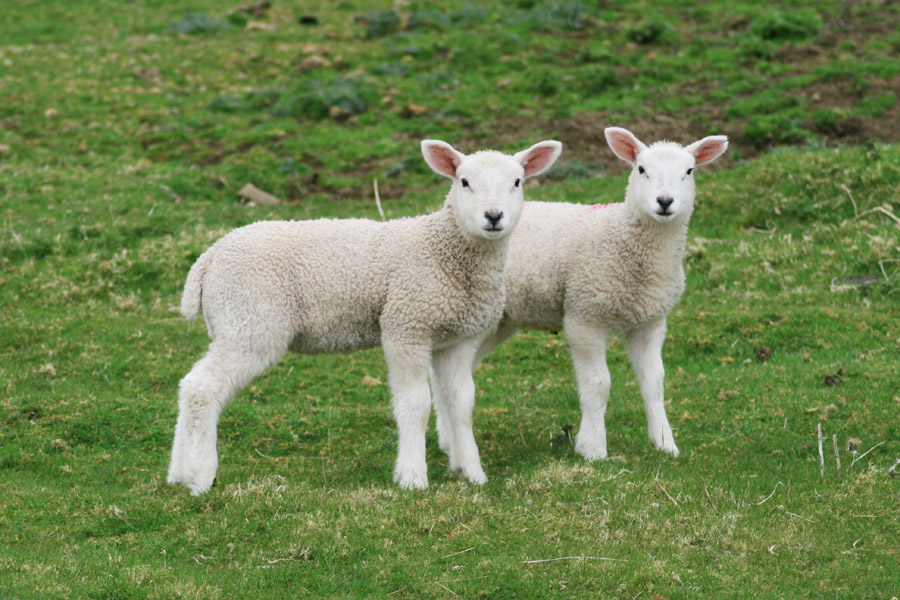
The track turns steeply uphill, past the farm of East Mains, before turning left to a set of impressive gate posts. These are the old entrance to Carmichael House.
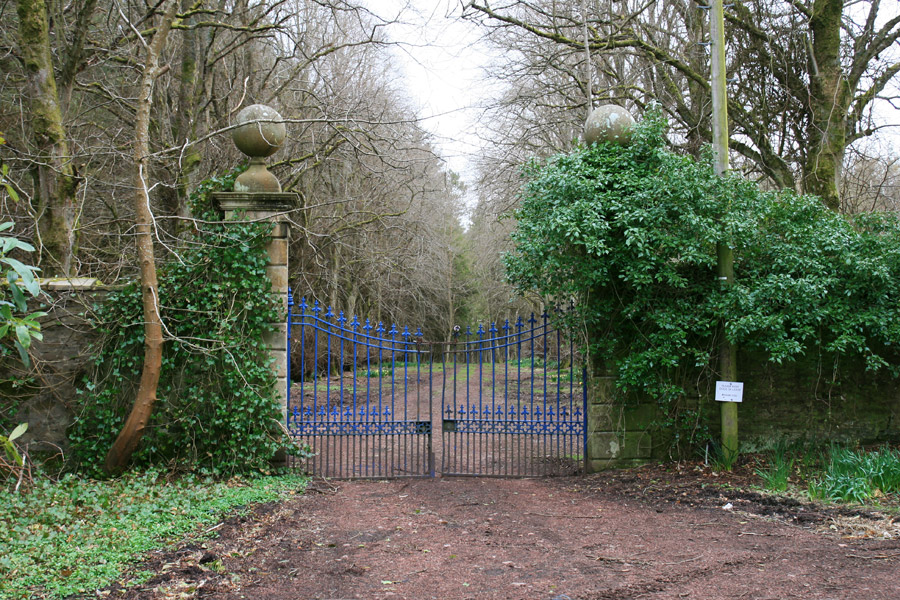
Carmichael House was built in 1754 for Sir John Carmichael, the 3rd Earl of Hyndford, on the site of an earlier castle. In 1952 the roof was removed to avoid property taxes and death duties, and it is now a substantial ruin surrounded by woodland.
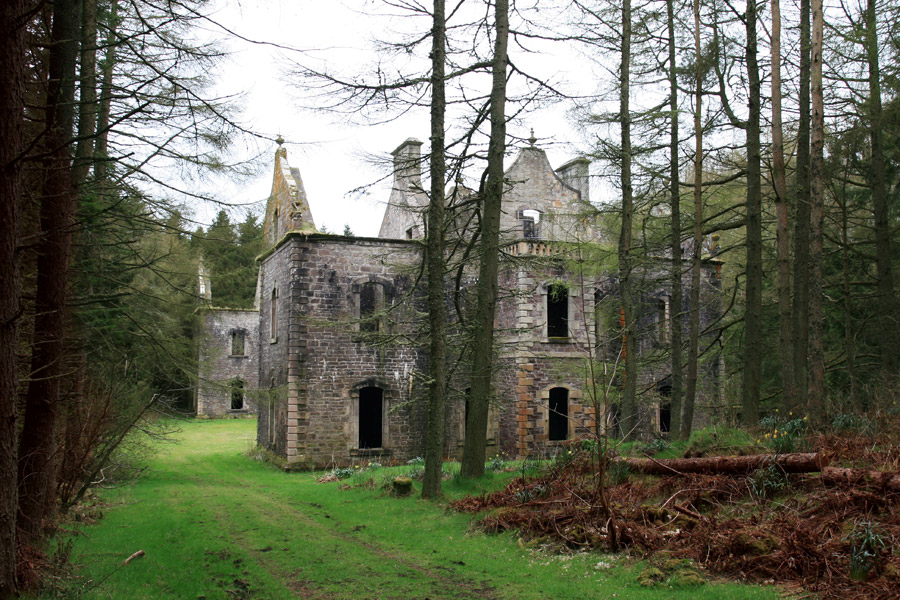
At the east and west are grand accommodation blocks, two storeys in height and five bays in width.
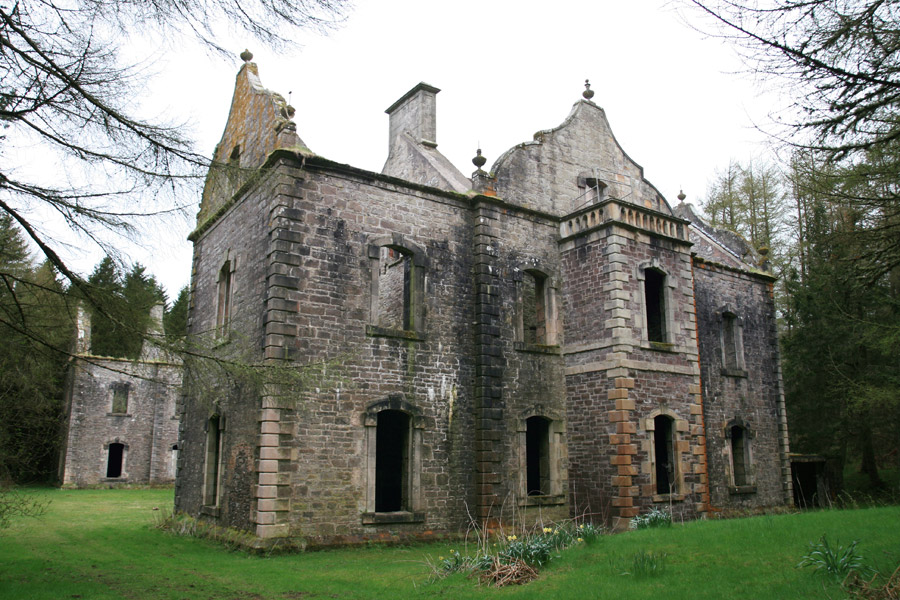
Between them is a small two storey square tower, once which stood at the centre of a corridor linking the two main wings. Most of this corridor has now gone, and this rather unusual H-plan is thought to possibly have some about as a result of the original design not being completed.

The east range is almost symmetrical to the west range.
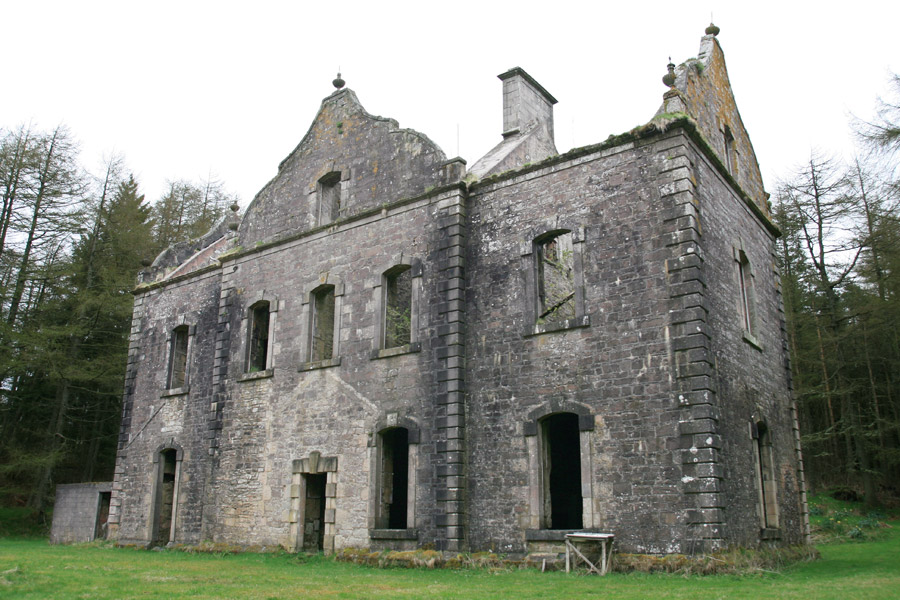
The ceilings on the ground floor are vaulted, and while they would once have been decorated with elaborate plasterwork it has all fallen away and now the stone of the vaulting is visible.

In 2000 a plaque was erected on the central tower following consolidation of the walls, naming those who had contributed to the costs.

While access to the inside of Carmichael House isn’t allowed for safety reasons, looking in the windows it’s possible to get a feel for the grandeur that must once have been on display in these interiors.
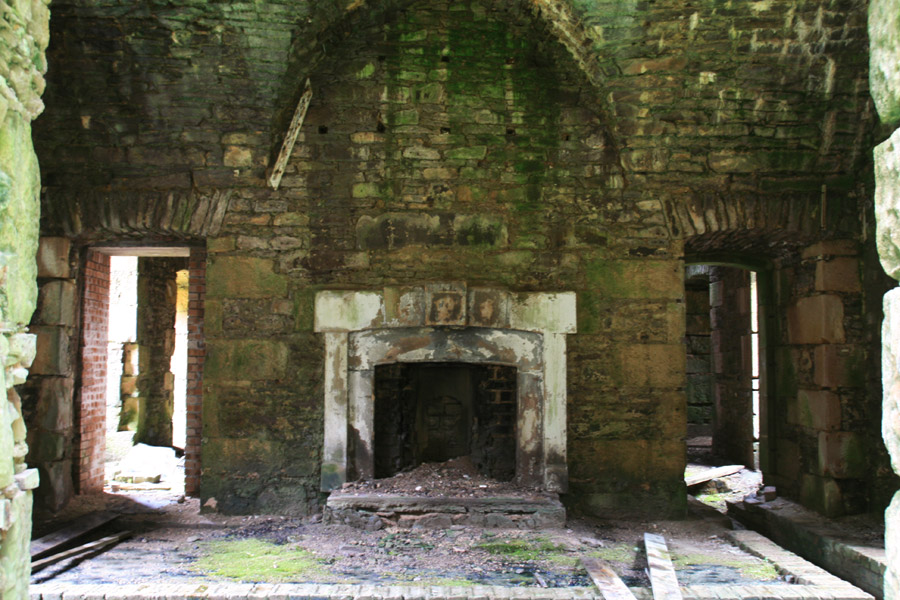
It’s quite sad that such a grand building can be left to ruin, but the costs involved in restoring a property of this size would be enormous. Perhaps one day something can be done.
We made our way back down the track, stopping to take a photo of a pheasant which had flown up onto a wall.

To our left was Kirk Hill, which may have been an ancient hillfort. In the 12th century it was the site of a church, supposedly founded by Queen Margaret in the 11th century, and dedicated to St. Michael. It is said that the name Carmichael derives from this site, “caer” being the old word for a hillfort.

We made our way back down the track to St. Michael’s bog, pausing to take a photo of the cloud-enshrouded peak of Tinto Hill.

Instead of a pheasant in the grasses of the bog, this time we saw a lamb.
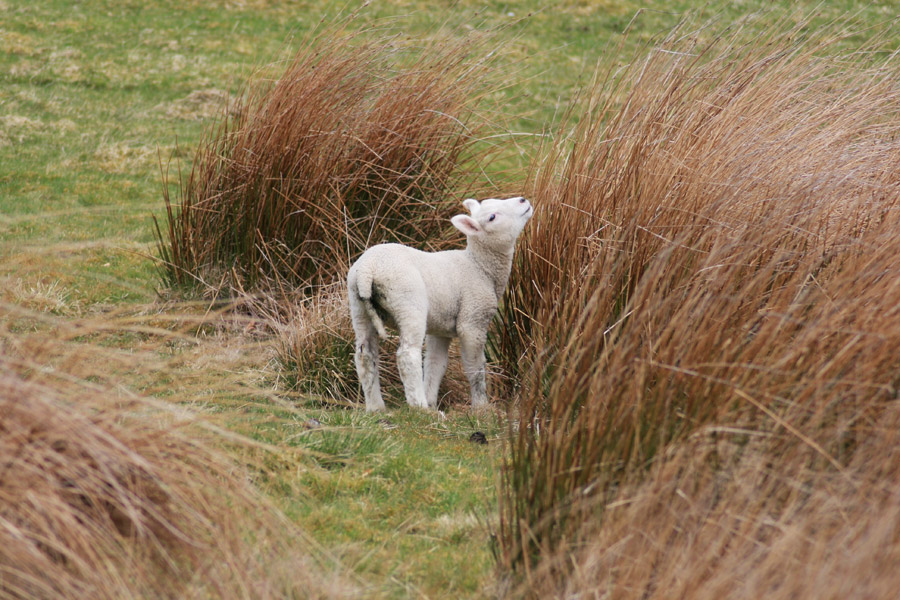
We returned back through the deer park, the deer observing us closely.

From the car park we could see the fort of Quothquan Law on the horizon. Although not the biggest of hills, it’s visible from all around this area, and we would see it several times over the course of the weekend.

We were now following the route of a second walk from the car park heading south in the direction of Eastend, a second ruined old Carmichael property.

It consists of an early 16th century keep around which a large mansion has grown up over the centuries. The main entrance is now at the bottom of a round stair tower.

Unlike Carmichael House, Eastend is boarded up, the interior being riddled with dry rot.

On the north side the keep is still clearly visible, although on the south side it has been remodelled beyond recognition with the addition of a Georgian bow-fronted façade.
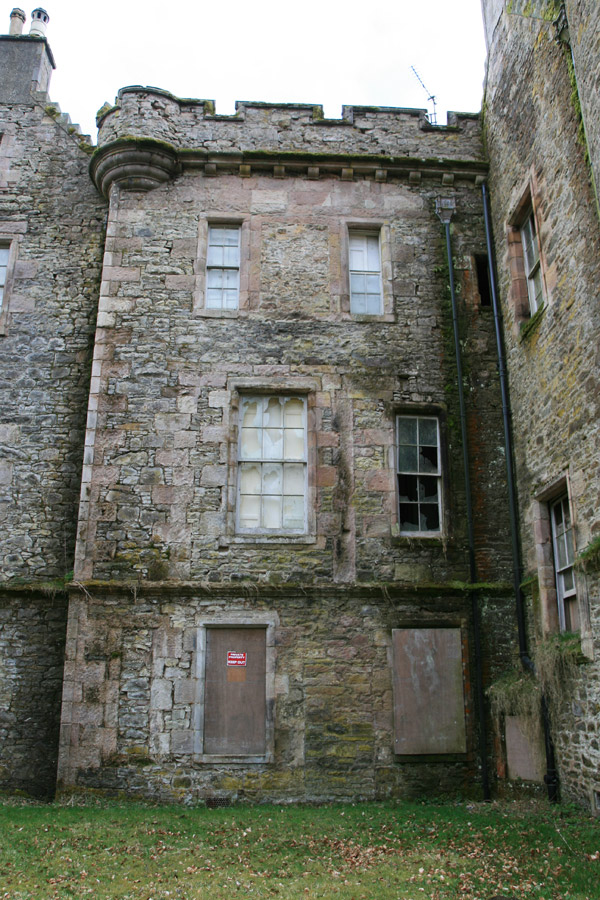
The building features several carved panels carrying the initials “MTC”, presumably for Michael Thomson-Carmichael who succeeded to the estate in 1875, and what looks like it might be “NXMT”.
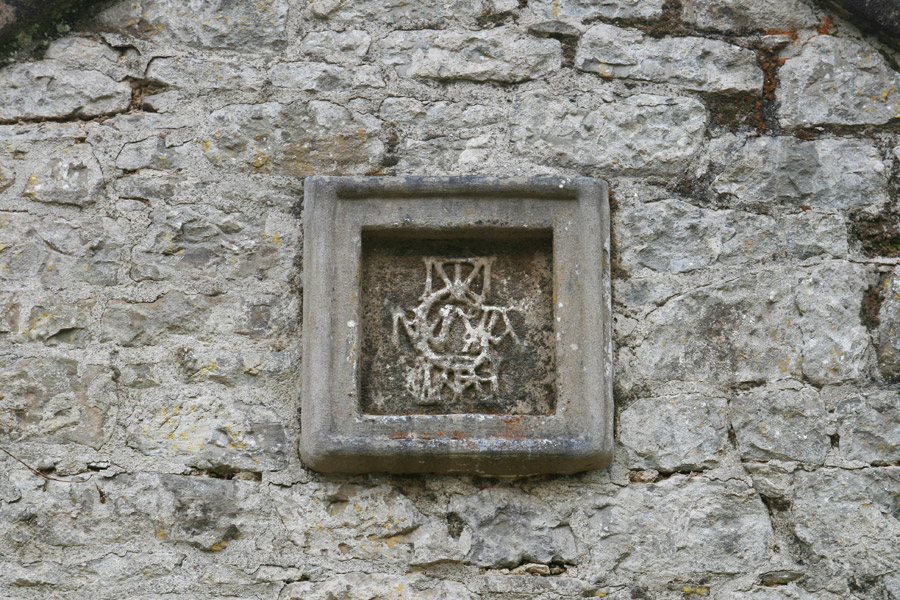
Scots baronial extensions were added to the west side of the house between 1853 and 1856 by David Bryce.

On the left side of the round tower is a carved armorial panel containing the combined arms of the Carmichael and Thomson families, with their respective mottoes “Toujours Prest” (“always ready”) and “Optima Est Veritas” (“truth is best”).

The state of this building is perhaps even more sad than that of Carmichael House, since having a roof makes it seem more habitable. However the reality is that again a significant investment would be required to make that so.
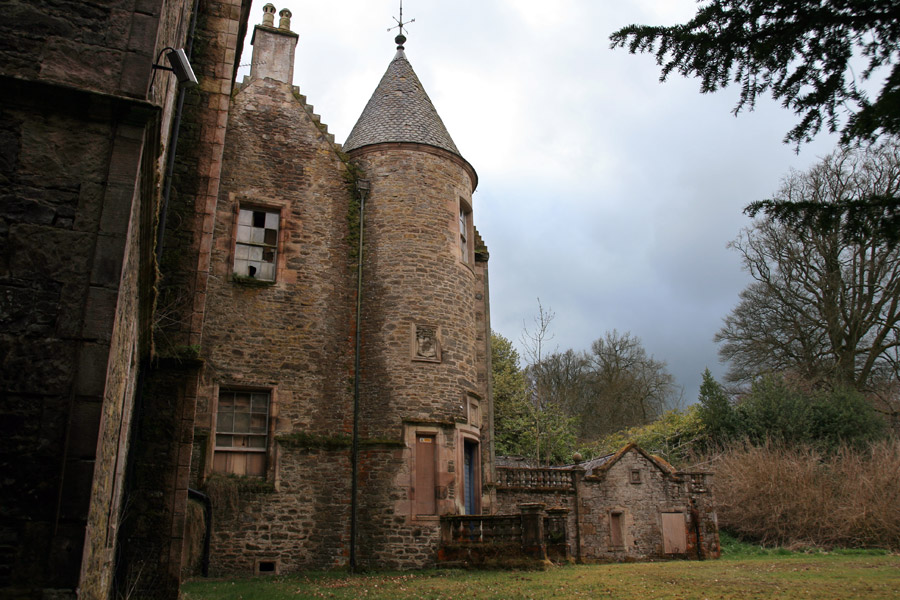
Details such as the sash and case windows, albeit with smashed panes, and the wooden shutters hint at its former glory.
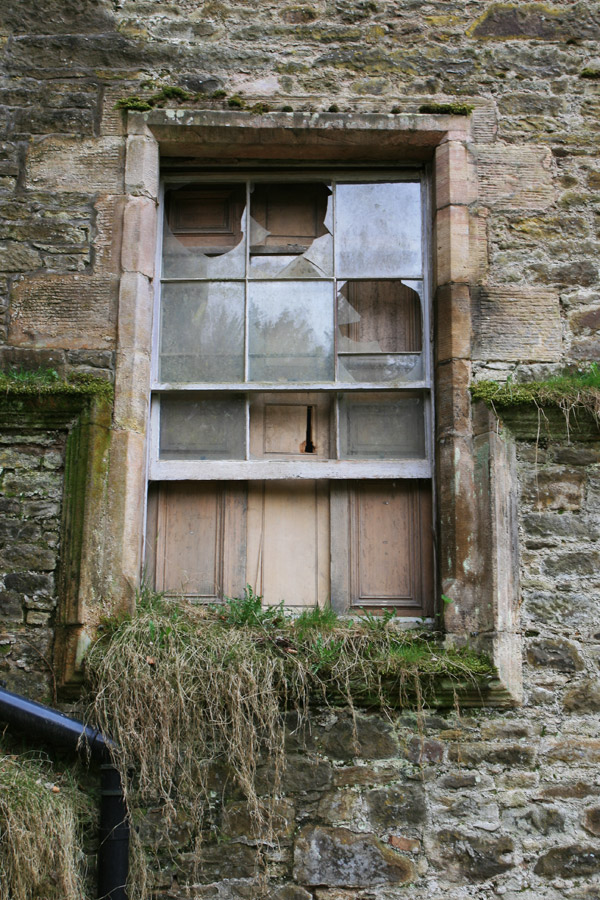
It’s a real shame that this building is empty, although that’s being said from an idealistic point of view without the requirement to actually find the funds to restore it.

Returning back along the lengthy driveway, we emerged from the wooded estate to be greeted by heavy grey skies.
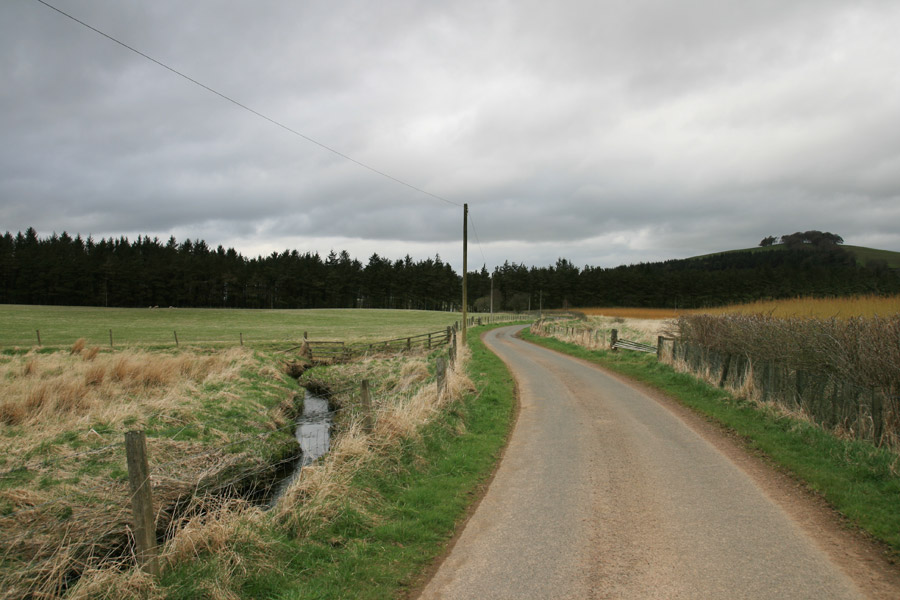
With the Visitor Centre now shut, we returned to the car and set off for Shieldhill Castle, now a luxury hotel, where we’d be spending the night.
We took a slightly indirect route however, heading north via Carstairs to Carnwath to see the Carnwath motte.
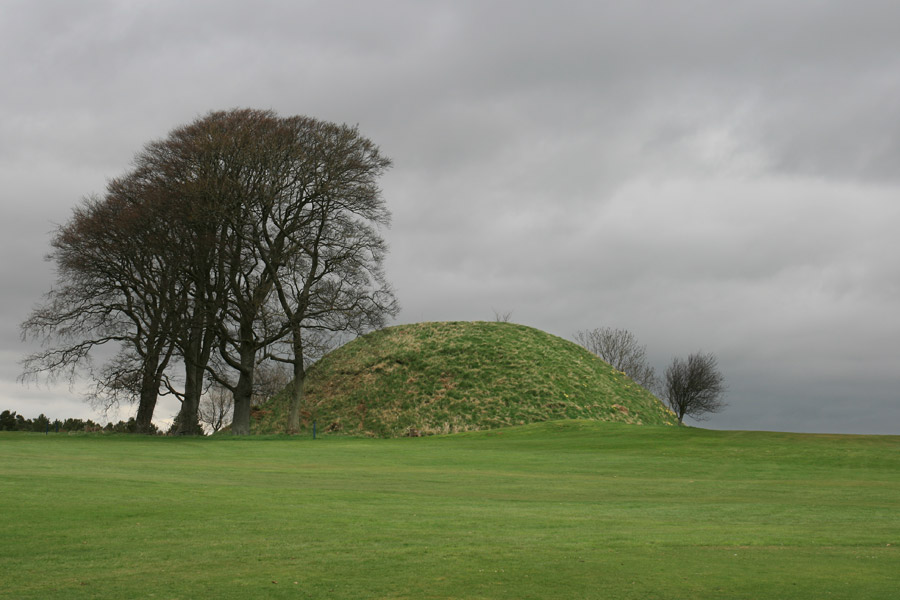
The motte was the site of a castle built by William de Somerville in the 12th century, and is now within Carnwath Golf Club. This early castle was later replaced by a new castle on the site of which now stands the clubhouse.
Carnwath House, which was demolished in 1970, was largely an early 19th mansion, although at its core was a much older building dating back to at least the 16th century. The presumably 19th century gate piers can still be seen, built into the golf club’s wall next to the main road.

It’s quite hard to imagine what was here before when surveying the scene today.

Across the road is St. Mary’s Aisle, the only remaining aisle of a 15th century Collegiate Church, built on the site of a 12th century church.

Just to the east of Carnwath is Carnwath Mill farmhouse, which looks pretty much like a farmhouse but is in fact an old bastle house. The tiny window on the first floor gives a suggestion as to its earlier incarnation.
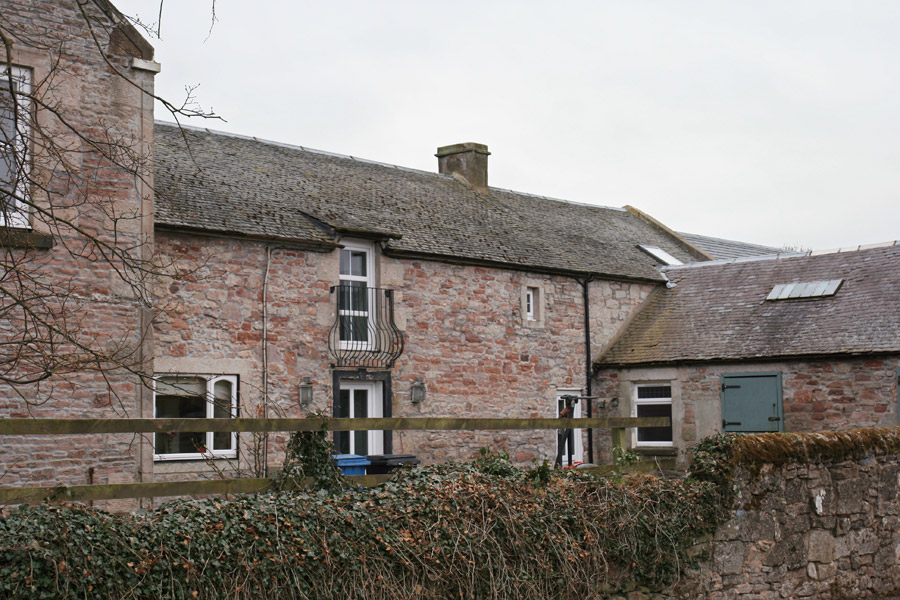
Although it has a definite cottage look today, the walls are in fact over a metre thick, and the central first floor window was originally a doorway reached via an external stone staircase.

With time marching on, and a dinner reservation fast approaching, we finally made our way to Shieldhill Castle. Driving up the pink granite gravel driveway, the oldest part of the old castle was closest to us.

Dating back as far as the 12th century, the oldest visible part of the castle is probably 16th century in date. Originally a square keep it now forms the main entrance hall. An intramural staircase just inside the doorway hints at its history as a defensive structure.
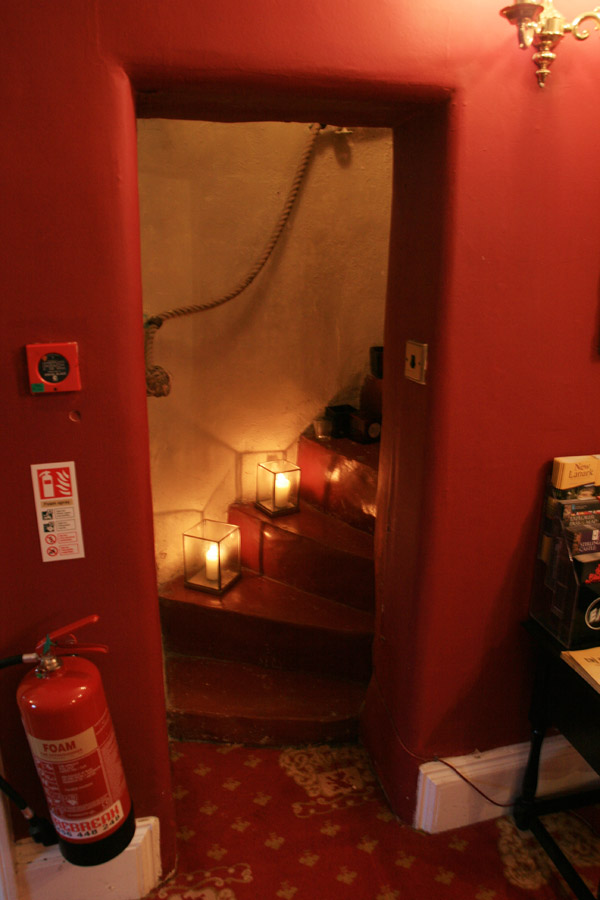
Luckily for us any fears of castle hotels being cold, dark, draughty places were soon allayed when we were shown to our beautifully-decorated room.

After a delicious dinner we retired to the bar to plan tomorrow‘s itinerary.

